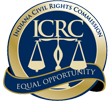Indiana’s first Constitution, written in 1816, stated: “WE declare, That all men are born equally free and independent and have certain natural, inherent, and unalienable rights; among which are the enjoying and defending life and liberty, and of acquiring, possessing, and protecting property, and pursuing and obtaining happiness and safety.”
Indiana enacted the public accommodations law in 1885, which stated that all persons are “entitled to the full and equal enjoyments of the accommodations, advantages, facilities, and privileges of inns, restaurants, eating houses, barber shops, public conveyances on land and water, theaters, and all other places of public accommodations and amusement, subject only to the conditions and limitations established by law and applicable alike to all citizens.” In 1945, the Indiana General Assembly created a Fair Employment and Labor Act which empowered the Division of Labor to: “remov[e] discrimination with respect to employment because of race, creed, color, national origin, or ancestry.” In 1949, Indiana passed the Indiana School Desegregation Law which “prohibits racial or creed segregation, separation, or discrimination in public schools. . .”
In 1961, Indiana passed the Fair Employment Practices Act, creating the Fair Employment Practices Commission which had power to "receive and initiate and investigate the charges of discriminatory practices." As the agency was created to encourage employers to hire minority employees, it initially lacked enforcement authority. However, in 1963, the Commission was renamed as the Indiana Civil Rights Commission, and it gained enforcement powers in the areas of employment, education, and public accommodation.
In 1965, the Indiana Civil Rights Law was amended to prohibit discrimination in housing, both rental and sale, on the basis of race—preceding the federal Fair Housing Act (Title VIII of the Civil Rights Act of 1968) by three years. The Civil Rights Law was amended several times in the following years including in 1971 when discrimination on the basis of sex was made unlawful. In 1974, the General Assembly added protections in the provision of credit on the basis of race, religion, color, sex, national origin or ancestry and also granted the Commission authority to appoint an Administrative Law Judge (“ALJ”) to preside over administrative hearings.
The following year, the Commission was granted enforcement powers to address discrimination on the basis of disability, fifteen years prior to enactment of the Americans with Disabilities Act. In 1991, the General Assembly promulgated the Indiana Fair Housing Act, an act substantially equivalent to Title VIII which is enforced by the United States Department of Housing & Urban Development. The following year, the Assembly passed the “Hoosiers with Disabilities Act,” a law providing substantially equivalent protection as federal law in the area of employment of people with disabilities. In 2013, limited circumstances applied to Veterans were added.
Interact with the Indiana Civil Rights timeline below by scrolling with the horizontal scrollbar 👇
This feature is best viewed in a google chrome or a safari browser.

1800s
1810s
Indiana's First Constitution
1820s - 1880s
Indiana Enacts Public Accommodation Law
1890
1900s
1910s - 1930s
1940s
Indiana Fair Employment
& Law Act
1950s
1960s
Fair Employment
Practices Act
Commission renamed to Indiana Civil Rights Commission

The General Assembly renames the commission and grants enforcement powers in the areas of employment, education, and public accommodation.
Housing Discrimination
added
Civil Rights Act of 1968
🎇 FEDERAL Level 🎇
1970s
Basis of Sex
added
- Credit Discrimination added
- Administrative Law Judge is appointed for hearings.
ICRC Enforcement Area
Expanded to include Disability
1980s
1990s
ICRC Enforcement Area
Expanded to include Disability
Hoosiers with Disabilities Act
of people with disabilities.
2000s
2010s
Veteran Status
added

